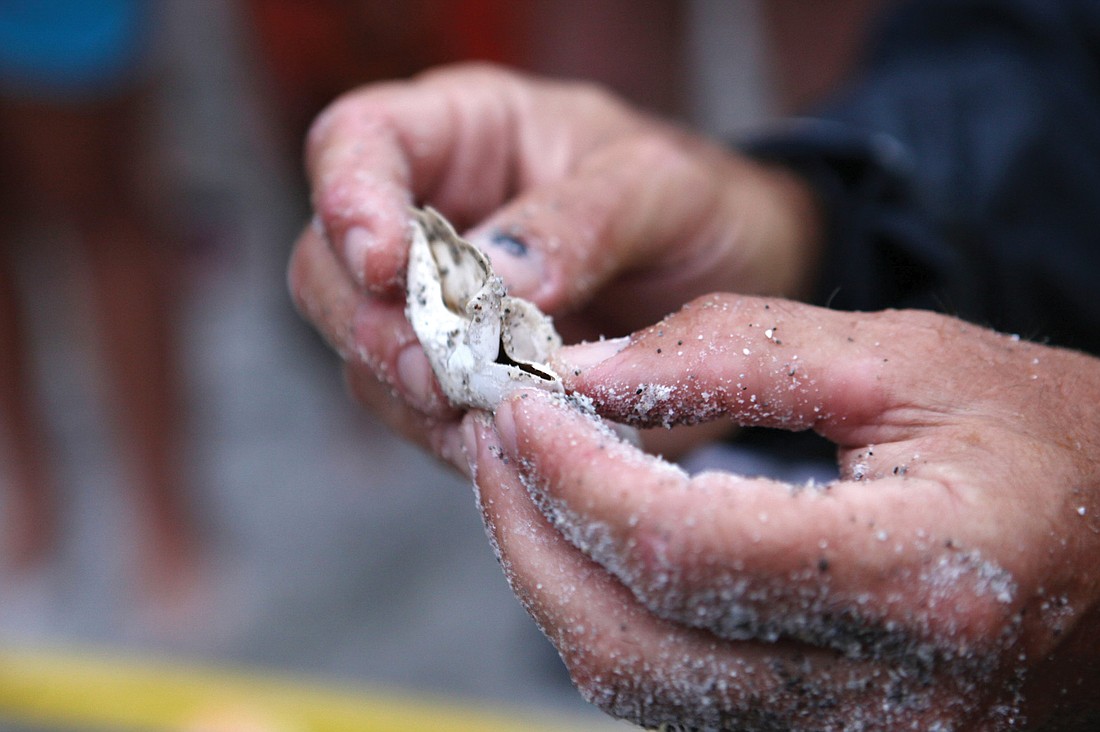- April 24, 2024
-
-
Loading

Loading

Scientists at Mote Marine Laboratory and Aquarium have been studying sea turtles that nest along our Southwest Florida beaches for 31 years. During that time they have tagged more than 4,000 nesting females and documented 1.5 million hatchlings depart to begin their lives at sea.
Mote scientists and volunteers evaluate nesting patterns for the conservation of these threatened and endangered animals. They mark nests to identify the location and to ensure that they are protected from things like beach cleaning, debris removal, beach furniture and even from predators like raccoons. Nests are checked daily and scientific data is collected on each one.
From May through October, our staff and more than 300 Sea Turtle Patrol volunteers walk 35 miles of beaches, daily, beginning at first light.
Interestingly, the 2012 season is shaping up to be like no other on record, according to experts in our Sea Turtle Conservation and Research Program. Unfortunately, this is a good news/bad news scenario.
The good news is that we have set a new 31-year record for nests laid on our beaches. So far, 4,379 loggerhead sea turtle nests have been documented from Venice Beach to Longboat Key (previous record in 1998 was 4,146 nests). The bad news is, that Tropical Storm Debby and the rain it brought, combined with seasonal high tides, managed to wipe out an estimated 1,000 nests.
While our sea turtle experts hope that the high number of nests will make up for those lost in the storm, the other bad news is that our resources are also running out.
We’ve had to call in extra volunteers to help with data entry, but we remain short-staffed; we’re also running out of things like stakes and cages to mark and protect nests. Many supplies were lost during Debby and many nests needed to be marked again; we’ve also had to mark the new nests being laid. Unfortunately, there are limited financial resources to fill in the gaps.
But our nesting research and monitoring efforts are only a part of Mote’s work to conserve sea turtles.
Our Stranding Investigations Program often rescues sick or injured turtles and our hospital has treated more than 400 from all over the Southeastern U.S. since 1995. Many of these animals have been successfully returned to the wild.
Our scientists also use high-tech satellite transmitters to follow these animals at sea because sea turtles migrate long distances from the beaches where they were born to distant feeding grounds and back. The scientists’ goal is to evaluate potential threats far from nesting beaches.
This work has found that turtles that nest in Sarasota swim many hundreds of miles to feeding grounds in the northern Gulf of Mexico, to Cuba, Mexico and the Bahamas — making them world travelers. We’ve also found that:
27 % of the 120 sea turtle outfitted with satellite tags were exposed to harmful algal blooms such as red tide;
19 % were exposed to long-line, by-catch in the Gulf of Mexico;
13 % were exposed to boat strikes;
And 38 % were exposed to harvest in a different country.
These findings make it clear that protecting sea turtles requires more than monitoring beaches in Sarasota County. While beach monitoring is without a doubt of utmost importance, we have also been working with our neighboring countries to make the most our conservation efforts.
Mote has been a key organizing partner of the Trinational Initiative, which brings together scientists from the U.S., Mexico and Cuba to talk about our shared marine resources and how we can all work together to conserve them.
In 2010, Mote hosted a meeting of researchers from each country that led to the creation of a formal action plan that scientists in each nation are now implementing to study and conserve coral reefs, marine mammals, shark and fish populations and, of course, our sea turtles.
Our scientists and their international colleagues have been working on a regional monitoring protocol for sea turtles to make sure that information can be shared among conservation groups and among nations. We do this because protecting the world’s shared natural marine resources will take a collaborative commitment of support for living in sustainable ways and an investment for the future of succeeding generations — of sea turtles and of humans.
Dr. Kumar Mahadevan has been the President and CEO of Mote Marine Laboratory and Aquarium for 26 years.